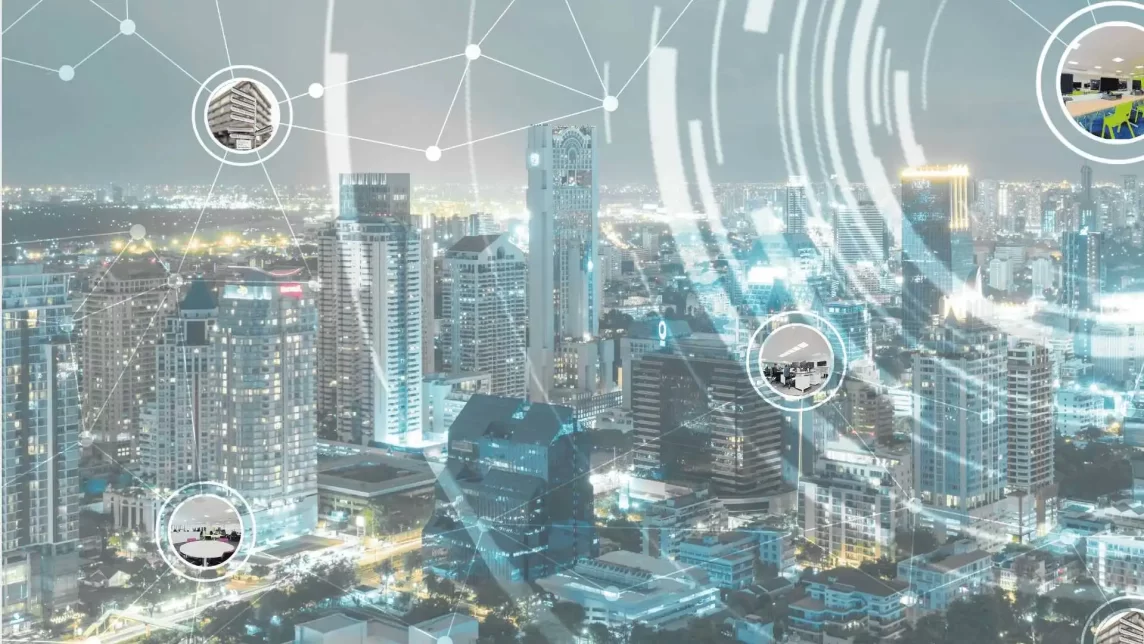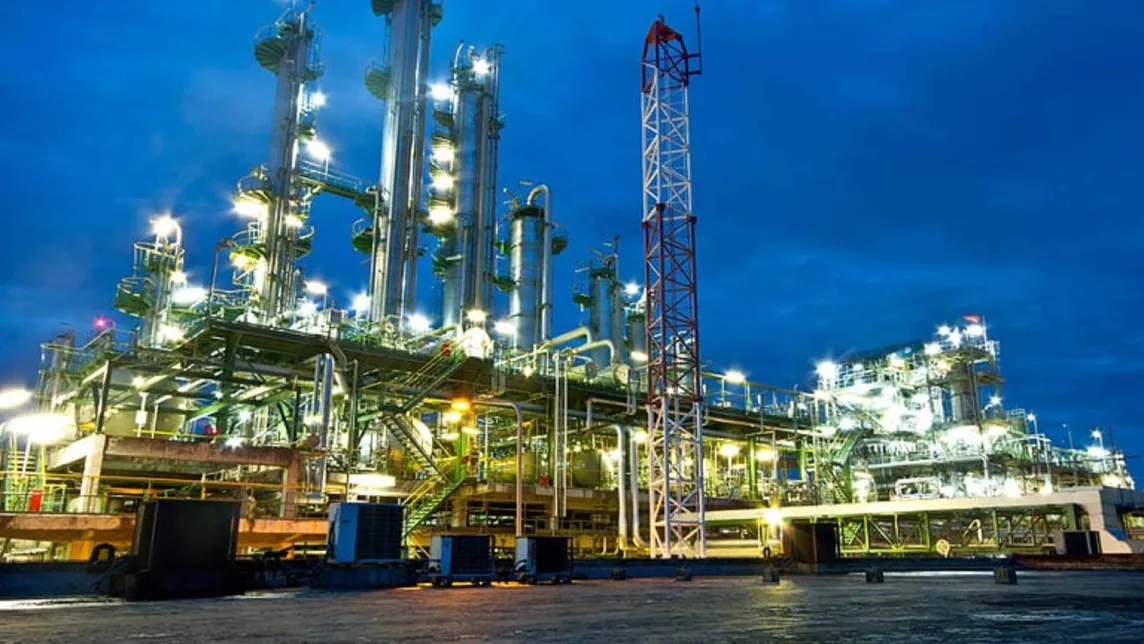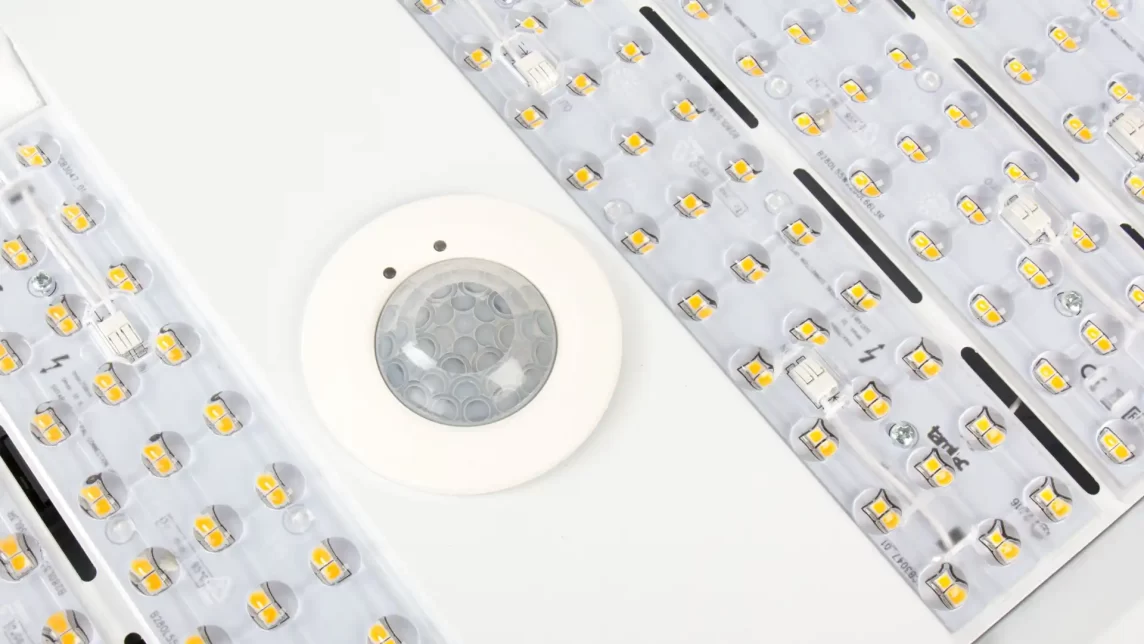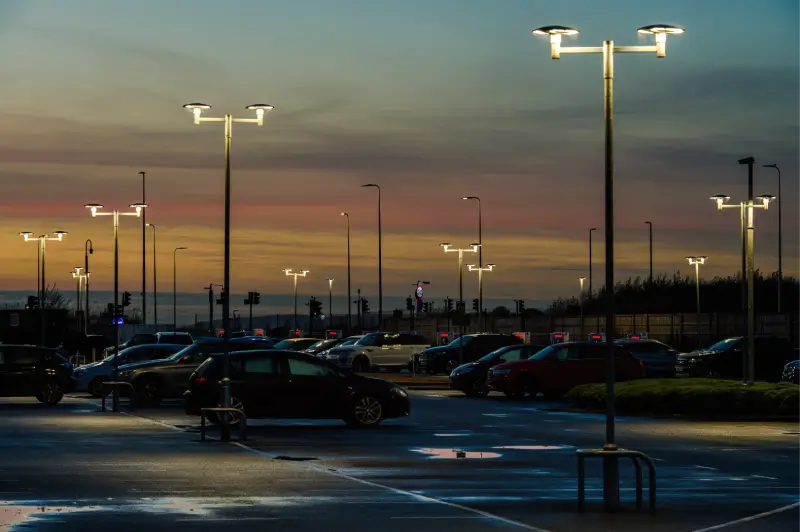
Understanding IP ratings is crucial to ensuring that your chosen lighting fixture can withstand the conditions it will be exposed to. This is especially the case with lighting systems for outdoor and industrial environments.
But what does ‘IP rating’ mean, and why is it so important?
What is an IP Rating?
IP stands for ‘Ingress Protection’ and an IP rating is based on the international standard (IEC 60529) used to rate the degree of protection or sealing effectiveness in any electrical fixture, including lighting, against the intrusion of objects, water, dust, or accidental contact. It corresponds to European standard EN 60529:1989 and British standard BS EN60529:1992.
An IP rating code always consists of the letters IP followed by two digits and, in some cases, letters. The two digits and the last letter indicate the type, and level, of protection offered by the fixture as explained below.
Decoding an IP Rating
The first digit indicates the degree of protection against solid objects like dust, sand, and dirt (Solid Particle Protection). It ranges from 0 to 6. The higher the number, the better the protection:
- 0 – No protection.
- 1 – Protects against solid objects with 50mm diameters and over.
- 2 – Protects against solid objects with 12mm diameters and over.
- 3 – Protects against solid objects with 2.5mm diameters and over.
- 4 – Protects against solid objects with 1mm diameters and over.
- 5 – Protects against harmless dust particles.
- 6 – Protects against harmful dust particles completely.
The second digit indicates the level of protection against water and moisture (liquid ingress protection). It ranges from 0 to 9. Again, the higher the number, the better the protection:
- 0 – No protection.
- 1 – Protects against condensed water droplets.
- 2 – Protects against liquid drops providing that the enclosure is tilted at an angle up to 15 degrees from the vertical.
- 3 – Protects against rain falling at an angle smaller or equal to 60 degrees.
- 4 – Protects against splashing.
- 5 – Protects against water jets (nozzle-projected water).
- 6 – Protects against harsh weather conditions; for example, if the appliance is to be used on ship decks, water from heavy seas will have no harmful effect.
- 7 – Protects against water immersion under a stated pressure and time constraint.
- 8 – Protects against water immersion completely.
- X – Not rated for liquid ingress protection.
Applying IP Ratings to lighting
In the context of lighting, here are just a few examples of how IP ratings might be applied, and what ratings you might look for in various settings:
Outdoor lighting systems:
- For outdoor lighting fixtures exposed to weather elements, higher IP ratings are suitable. IP65 and above are typically recommended to ensure protection against dust and water ingress.
- IP66 or IP67 might be more suitable for extremely harsh environments or areas prone to flooding.
- In industrial settings where there is a lot of dust, debris, or moisture, luminaires with robust IP ratings are required. Depending on the specific conditions, IP ratings of IP54 and above are commonly used.
- For areas with heavy washdown requirements, such as food processing facilities, IP65 or higher might be necessary.
Indoor lighting systems:
- While indoor environments are generally less demanding, certain areas like bathrooms, kitchens, or swimming pools require lighting fixtures with adequate protection against moisture.
- IP44 is typically sufficient for such indoor applications where occasional splashes or moisture exposure can happen.
An IP rating is a valuable tool for selecting the right lighting fixture for any given environmental condition. Whether lighting is for outdoor use, industrial settings, or indoor applications with specific moisture concerns, choosing luminaires with suitable IP ratings ensures longevity, safety, and performance.
For more guidance and advice about choosing the right lighting system for your project, please get in touch with Tamlite’s expert team here.





















